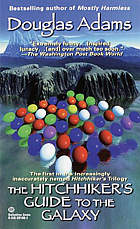Lucy Corin's first novel, Everyday Psychokillers: A History for Girls, published by FC2, begins as a wild, unapologetic mess. The story of a young girl in southern Florida, Psychokillers reminded me initially of Lynda Barry's Cruddy, Kathy Acker's Blood and Guts in High School, or a number of other ragged, jagged narratives yanked out of confused teenaged women. It's messy in that way, in that essentially female way, and its zigs and zags are almost familiar to me, this unpredictable, non-linear tempo.
It's the kind of book that leads reviewers and jacket copy writers to create lists of disparate elements: a Ted Bundy reject, the God Osiris, a Caribbean slave turned pirate, a circus performer living in a box, broken horses, a Seminole chief in a swamp, and a murderous babysitter. And the book is good in this way; it's inventive, fresh, out of control. You spend most of the first half asking yourself, "Where is she going with this?"
But ultimately what's interesting about the book is not the way it's fragmented. The story is told in mad, intense chunks, increasingly so disconnected from the central narrative of the young girl. We go from a fairly chronological account of a home life, a school life, of this main character, into digressions that start as anecdotes or asides from the character herself and evolve into separate stories -- stories of death and killers, murders, fear. That aspect of it is great, and Corin pulls together a very bold collage.
The interesting thing, though, is how it isn't fragmented, how the book spirals back on itself, revisiting ideas, images, and even sentence structures, so that while in some ways time, characters, and realities are fractured, the idea of the book spirals inward to a point, and comes together where the book blows apart. There are six or seven absolutely tight and monstrous pages toward the end that clearly express the book's central theme. I realized, reading them, the path I had to take to get there, to be told I am a killer, and that I am being killed, and that both are me. That realization is at the center of the spiral.
Looking at it from the top, a spiral moving outward looks the same as a spiral moving inward. It's not immediately obvious how Corin's book functions in this way, but the destination is worth the journey, and the investment in the book, you will find, sneaks up on you. Along the way, you'll find chapters that work as short stories, you'll see a dazzling slideshow of images you definitely have not seen before, and you'll find yourself falling into suspense over this character. Yes, in the middle of a novel built of formal experimentation, you'll be worried about this girl, and the question central to her psycho psyche -- will she kill or be killed?

























